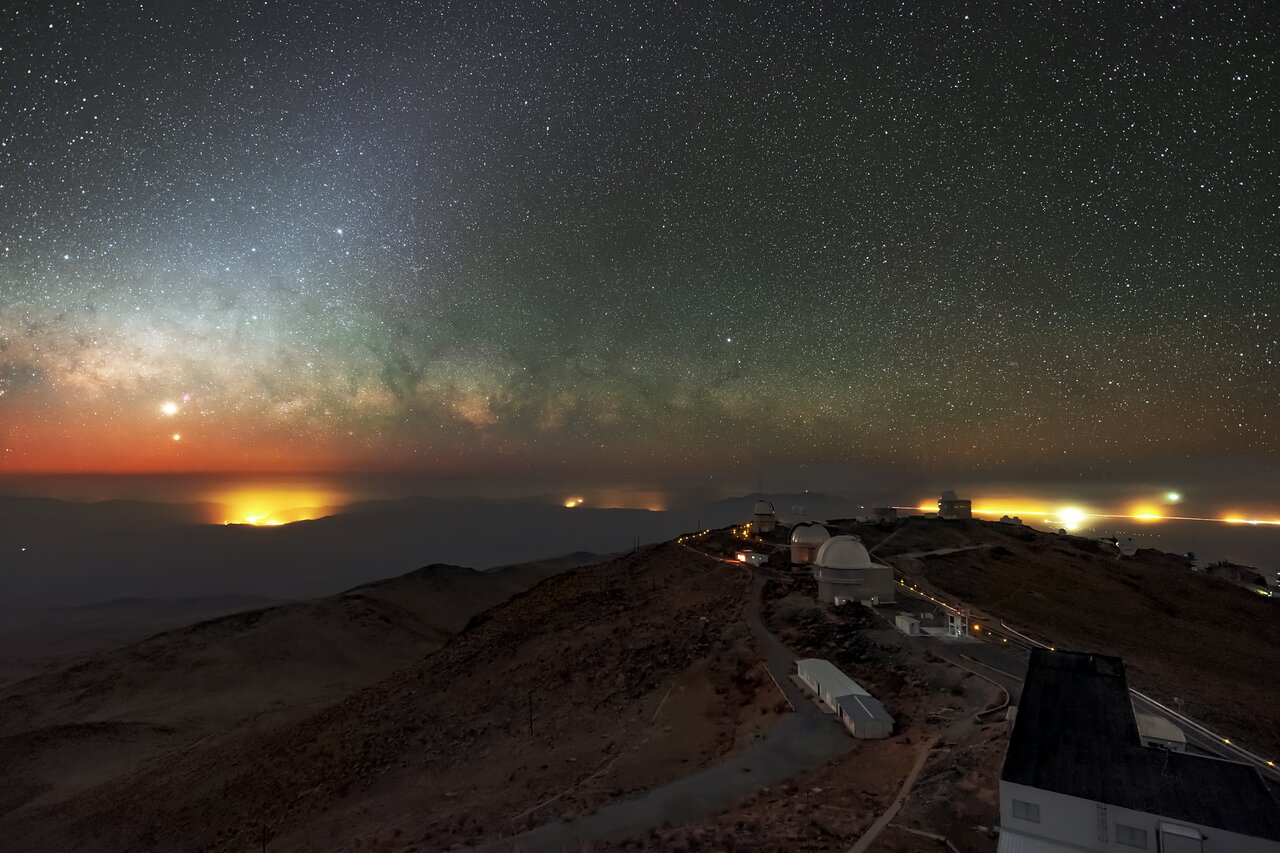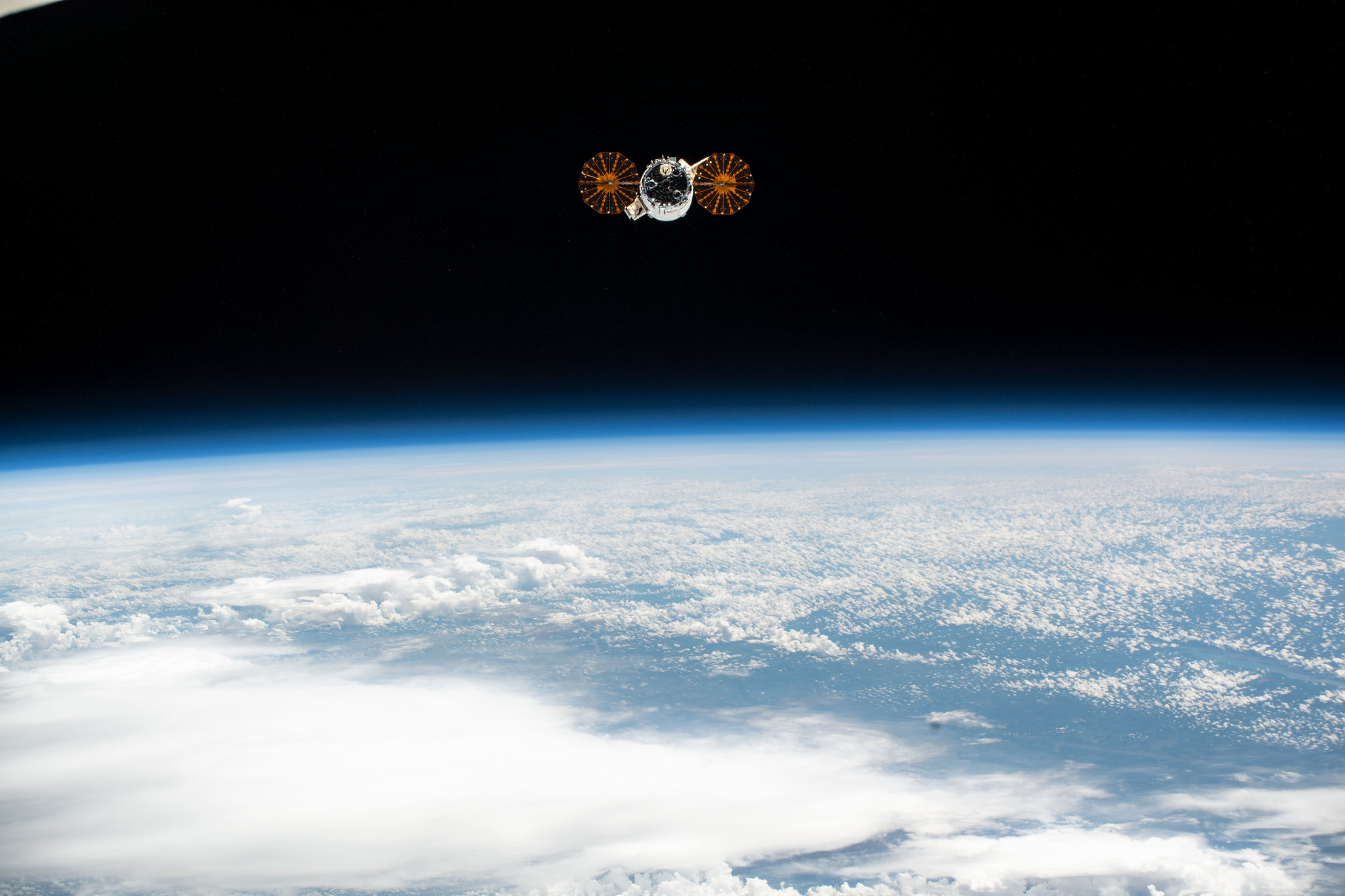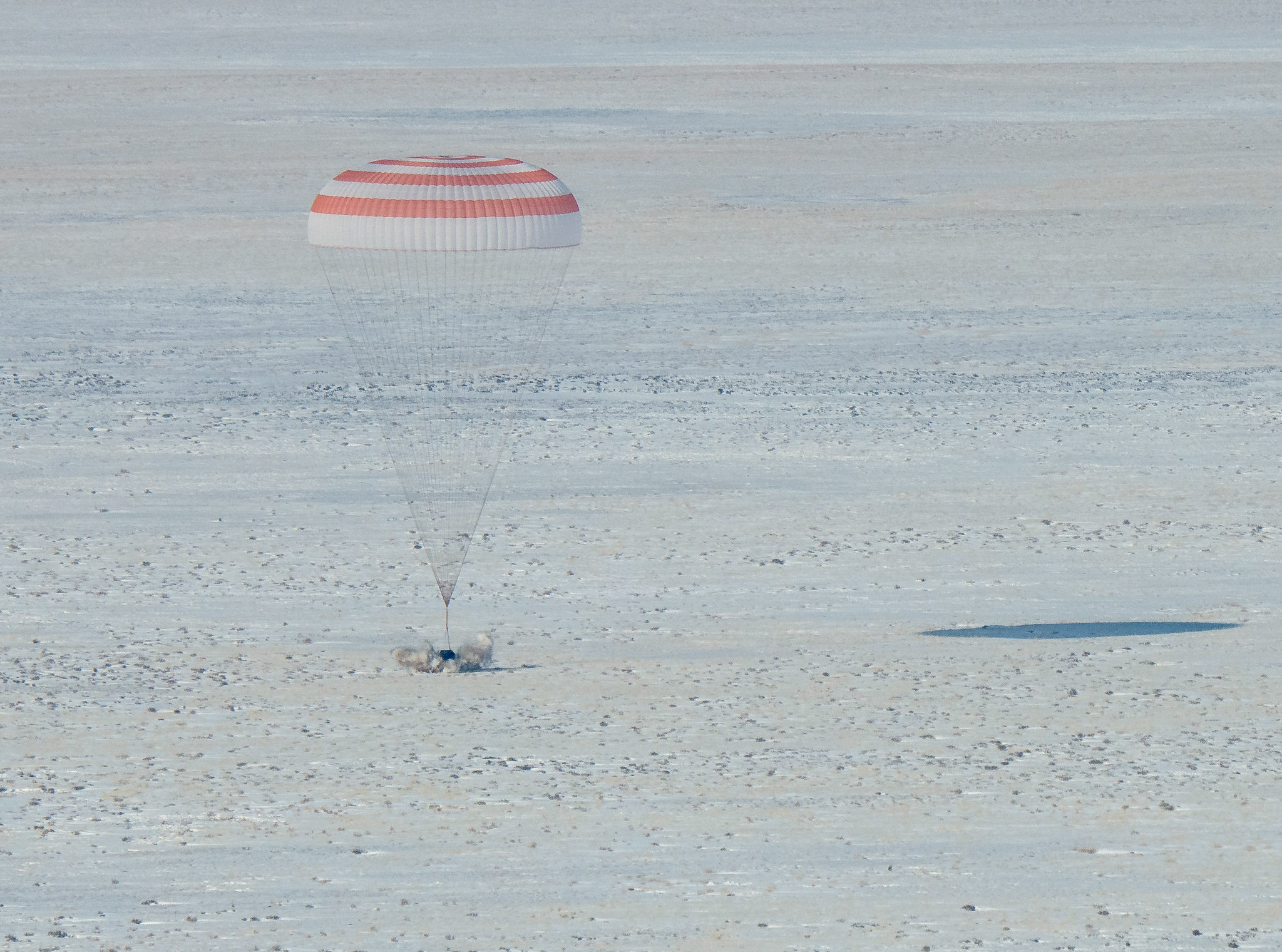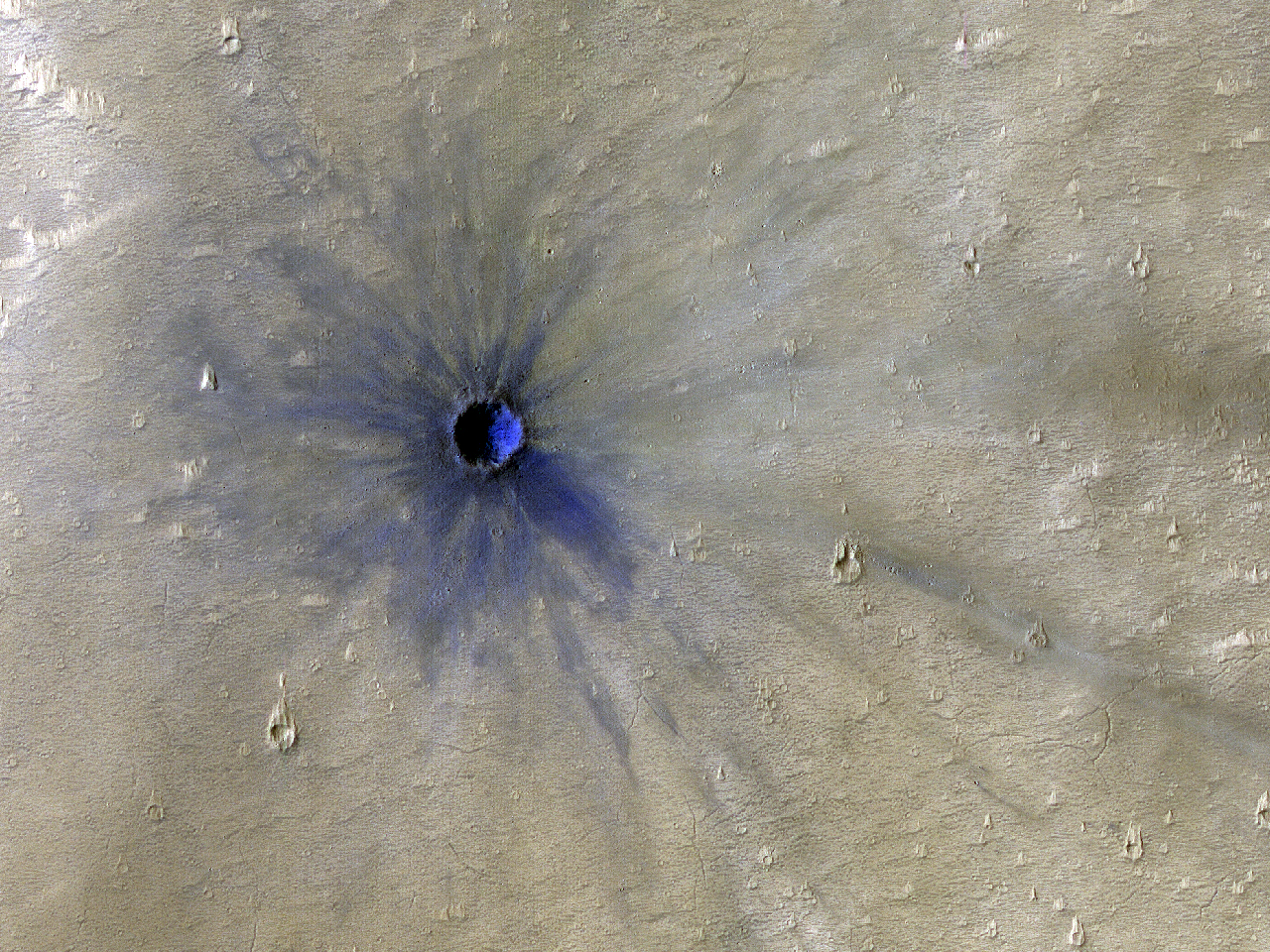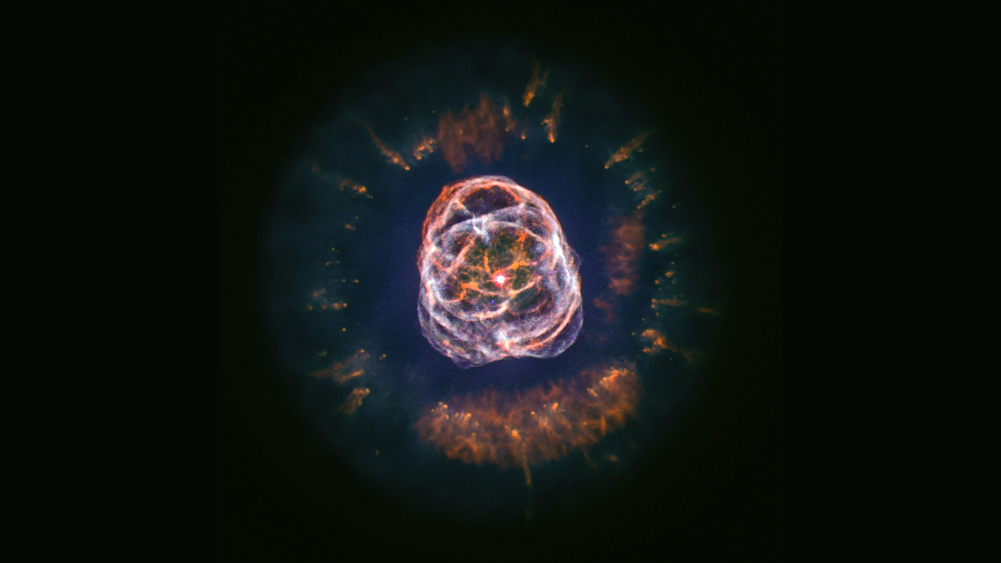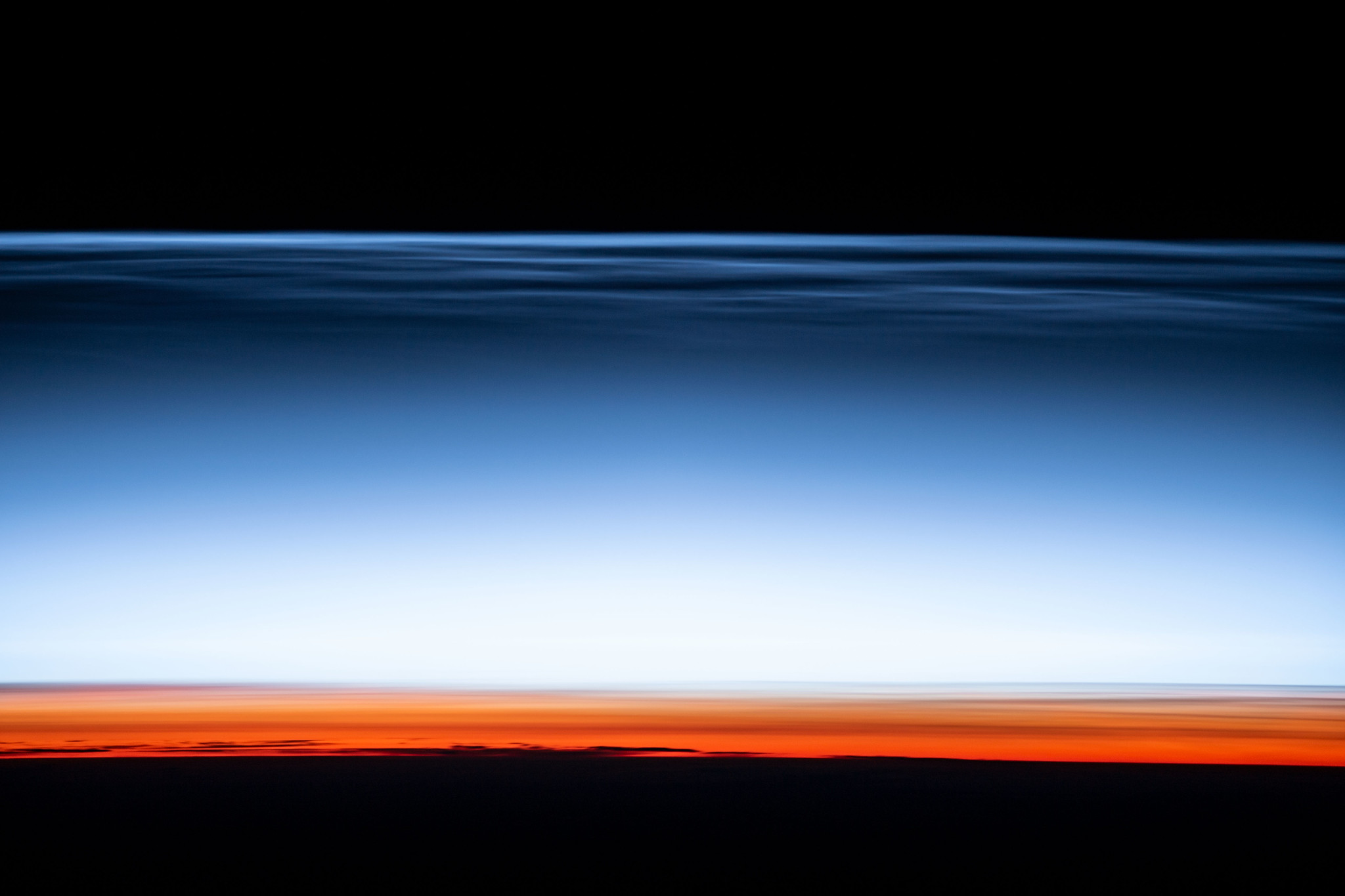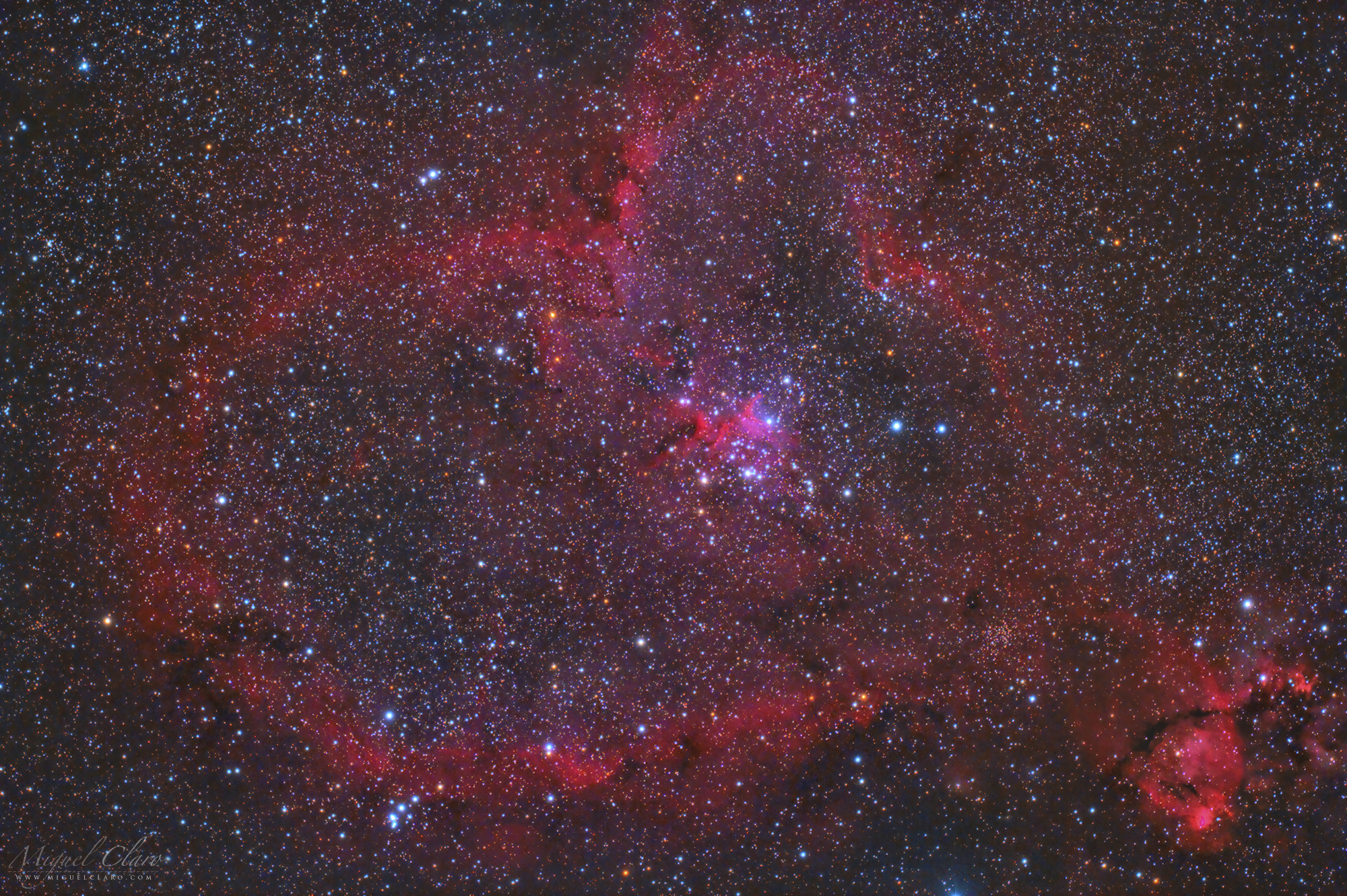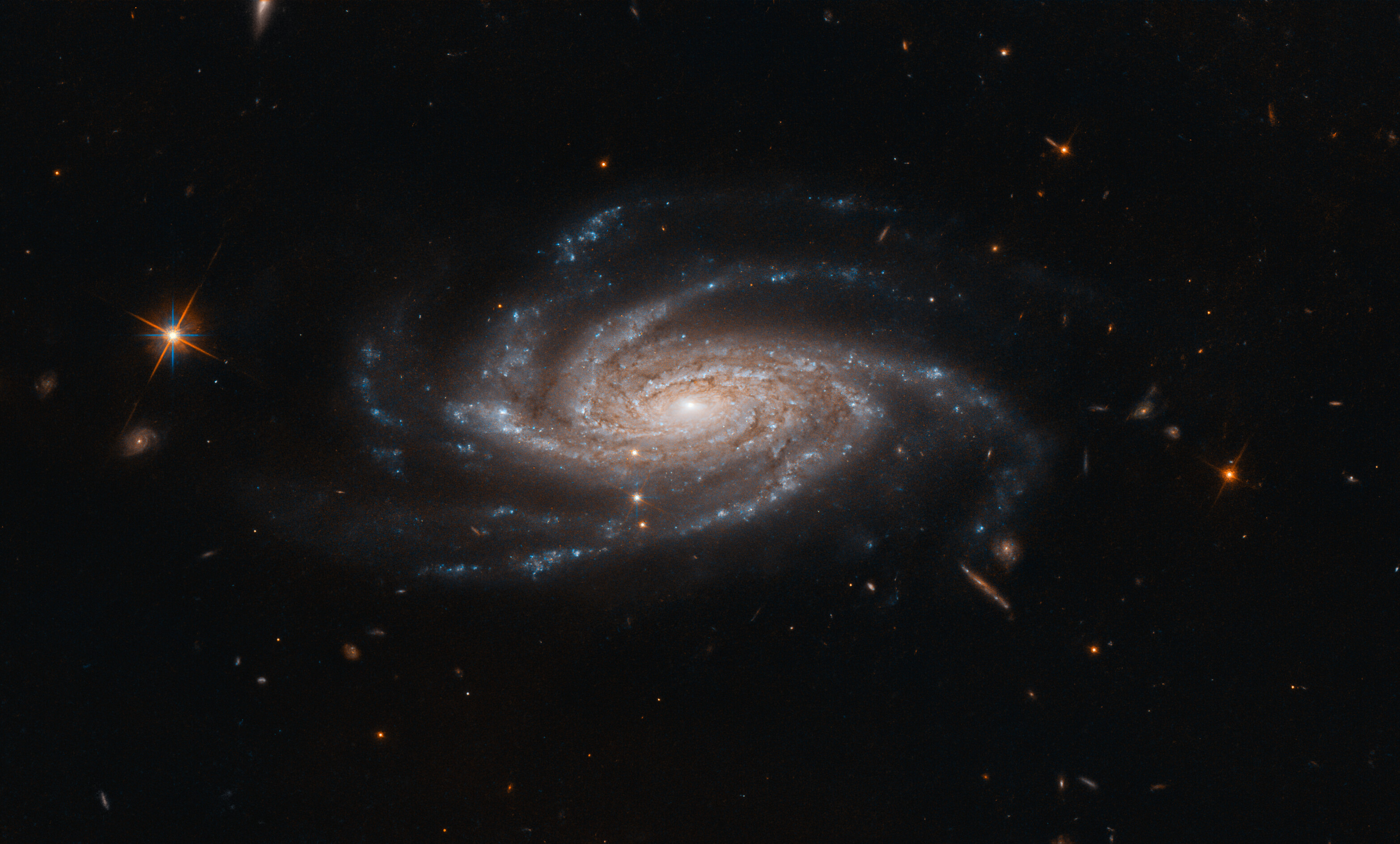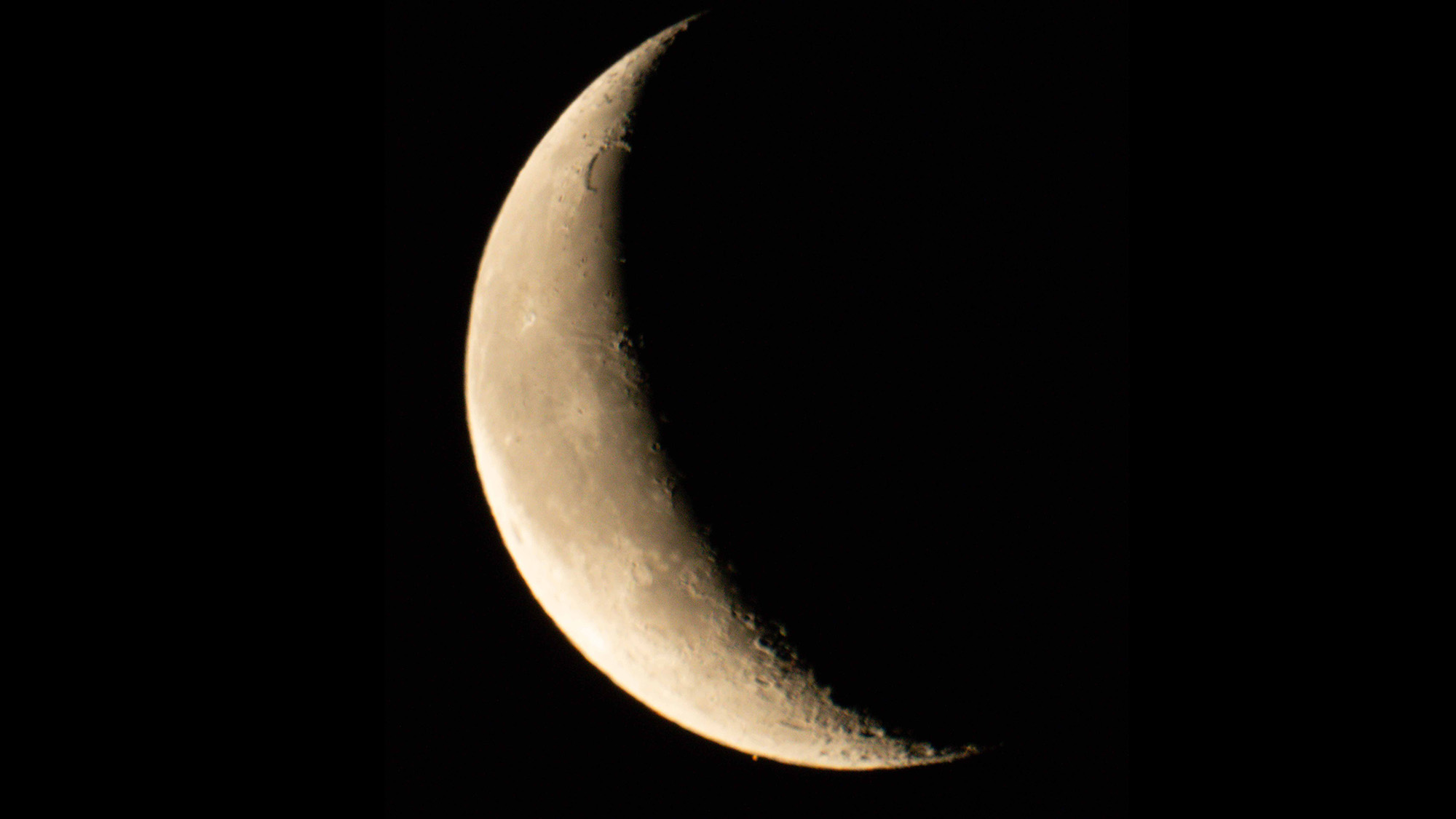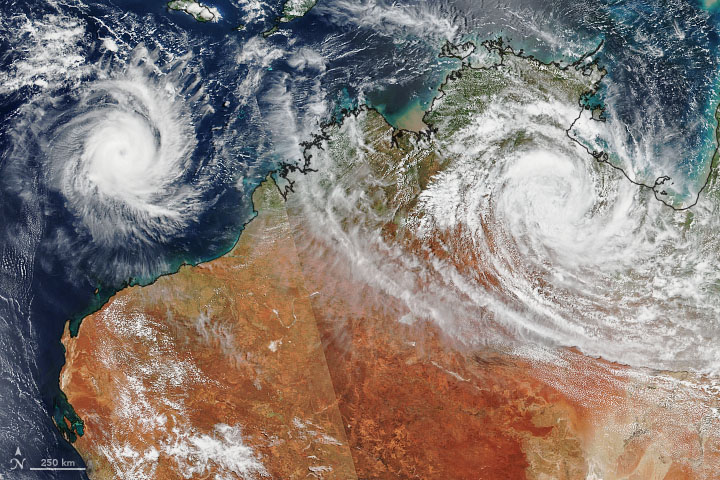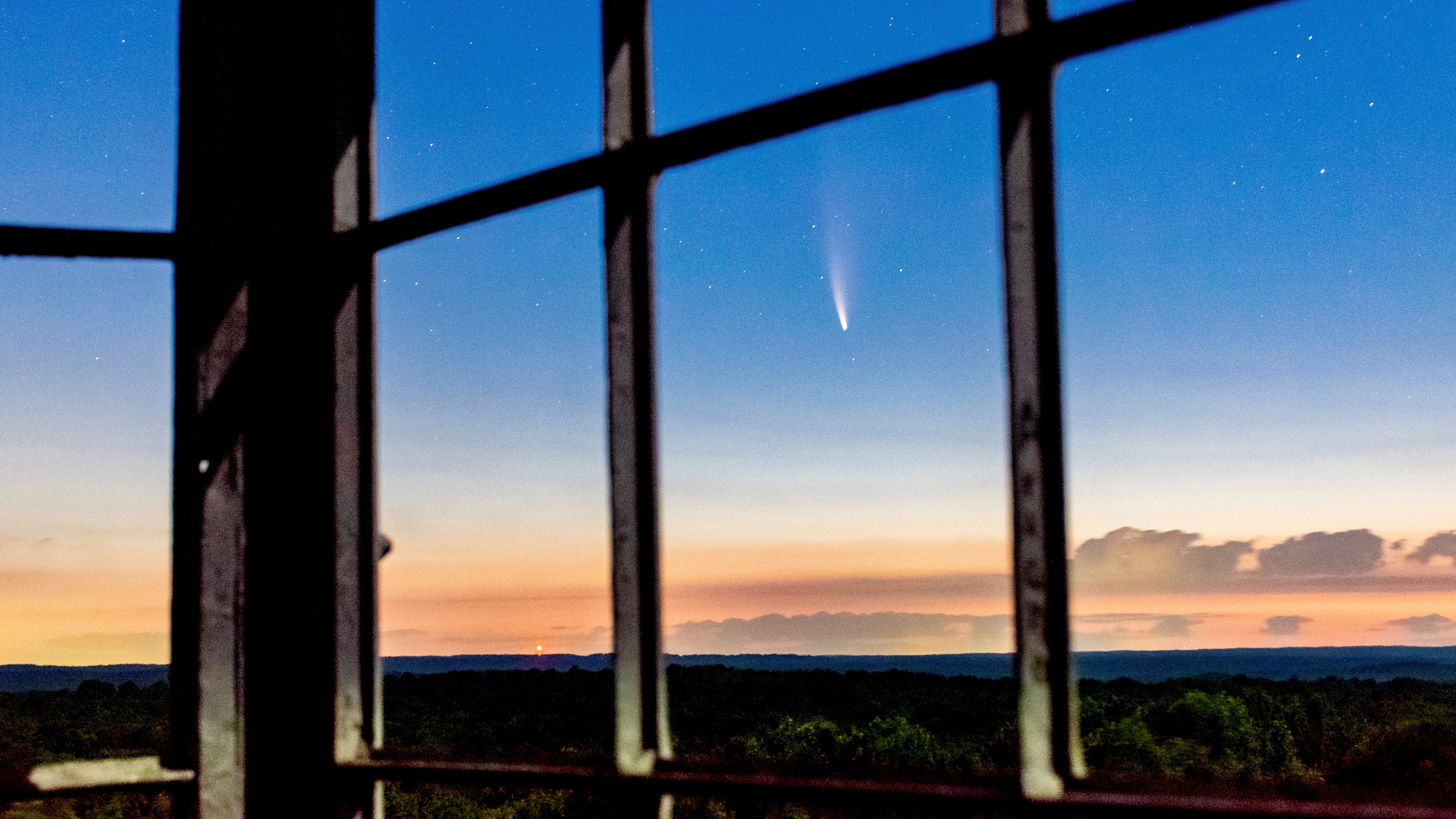Image of the Day 2020 Archive
February 2020
Venus and Jupiter meet in the Milky Way
Monday, February 3, 2020: The two brightest planets in the night sky, Venus and Jupiter, meet up for a conjunction in front of the Milky Way's shimmering core in this view from the La Silla Observatory in Chile. European Southern Observatory (ESO) photo ambassador Zdenek Bardon spent three nights trying to capture this image of the planetary encounter in late November, as clouds and humidity partially obstructed the view. Usually the La Silla Observatory has clear skies and low humidity due to its high elevation; it is located on a mountain in the Atacama Desert that is nearly 8,000 feet (2,400 meters) above sea level. While Bardon was perhaps unlucky for having to wait a few days for clear skies, this stunning photo was worth the wait! — Hanneke Weitering
Cygnus on the move
Tuesday, February 4, 2020: A Northrop Grumman Cygnus cargo spacecraft drifts away from the International Space Station after ground controllers used the station's Canadarm2 robotic arm to send it off on Friday (Jan. 31). While most departing cargo vessels head straight back down to Earth to burn up in our planet's atmosphere after completing their mission to the space station, this cargo craft, dubbed the S.S. Alan Bean, has one more mission to tackle before it meets its fiery demise. It will spend about a month in orbit to deploy a series of small satellites that will perform a variety of science experiments in space. — Hanneke Weitering
Touchdown!
Wednesday, February 5, 2020: A SpaceX Falcon 9 rocket booster sticks a vertical landing on the company's drone ship "Of Course I Still Love You" in the Atlantic Ocean, following its successful launch of 60 Starlink satellites on Jan. 29. This was the third time that this reusable rocket booster has launched and landed and the 49th time that SpaceX has recovered a Falcon 9 booster. This launch brought the total number of SpaceX's Starlink satellites up to 240, and the company already has permission from the U.S. Federal Communications Commission (FCC) to launch up to 12,000 of the internet satellites, though that number could swell to 30,000. — Hanneke Weitering
Welcome home, Expedition 61!
Thursday, February 6, 2020: The Soyuz MS-13 crew capsule carrying three astronauts home from the International Space Station touches down on the snowy steppe of Kazakhstan in this aerial shot by NASA photographer Bill Ingalls. The capsule touched down today at 4:12 a.m. EST (0912 GMT or 3:12 p.m. local time), with NASA's record-breaking astronaut Christina Koch, European Space Agency astronaut Luca Parmitano and Russian cosmonaut Alexander Skvortsov. — Hanneke Weitering
A fresh crater in Valles Marineris
Friday, February 7, 2020: NASA's Mars Reconnaissance Orbiter has spotted a relatively fresh crater on the Red Planet using its High Resolution Imaging Science Experiment (HiRISE) camera. While lower-resolution images can help scientists identify craters on the Martian surface, high-resolution images like this one can help them determine the age of a crater. For example, radial features known as "rays," which streak outward from the center of a crater, indicate that a crater is relatively young, because these features typically erode over time. A so-called "ejecta blanket" of dark basaltic rock, shown here in blue, creates a splash-like pattern closer to the site of the impact. NASA estimates that this crater, located in Valles Marineris, was created sometime between February and July of 2005. — Hanneke Weitering
Solar Orbiter launches to the sun
Monday, February 10, 2020: The European Space Agency's Solar Orbiter lifts off on an Atlas V rocket from Cape Canaveral Air Force Station in Florida, on a historic mission to study the sun's poles. The Atlas V rocket successfully launched Solar Orbiter from Space Launch Complex 41 last night at 11:03 p.m. EST (0403 GMT), and this timelapse photo shows its curved path into space. Over the course of the next 20 months, Solar Orbiter will perform a series of gravity-assist maneuvers, flying by Venus and Earth before venturing to the inner solar system, where it will study the sun up close, capturing unprecedented imagery of our star's poles. — Hanneke Weitering
Antares rocket under the Snow Moon
Tuesday, February 11, 2020: An Antares rocket topped with Northrop Grumman's Cygnus NG-13 cargo spacecraft stands ready for launch under the almost-super Full Snow Moon at NASA's Wallops Flight Facility in Virginia. The cargo resupply mission was scheduled to launch to the International Space Station on Sunday (Feb. 9), but NASA aborted the launch at the last minute due to off-nominal data from ground support equipment. It is now scheduled to launch to earlier than Thursday (Feb. 13) at 4:05 p.m. EST (2105 GMT). — Hanneke Weitering
Breaking space news, the latest updates on rocket launches, skywatching events and more!
The Eskimo Nebula
Wednesday, February 12, 2020: The planetary nebula NGC 2392, also known as the "Eskimo Nebula," is the colorful remnant of a star that died about 4,200 light-years from Earth, leaving behind a brilliant orb of intricate layers and patterns. This star didn't die in a supernova explosion, but rather burned up all of its fuel, causing it to cool, expand and shed its outer layers. This image combines data collected via NASA's Chandra X-ray Observatory and the Hubble Space Telescope in 2013, and citizen scientist Kevin Gill recently reprocessed the image to bring out the nebula's detailed structure. — Hanneke Weitering
Noctilucent clouds seen from space
Thursday, February 13, 2020: An astronaut at the International Space Station captured this image of noctilucent or "night-shining" clouds in Earth's upper atmosphere. These clouds, which are made of tiny ice crystals, are only visible during astronomical twilight, when the sun just below the horizon, but the clouds are still illuminated by sunlight. Below the blue cloud layer, the lower part of the atmosphere glows with the signature reddish color of sunset. — Hanneke Weitering
A cosmic valentine
Friday, February 14, 2020: Happy Valentine's Day from space! The Heart Nebula, also known as IC 1805, shimmers in deep space in this photo by astrophotographer Miguel Claro. Located 7,500 light-years from Earth in the Perseus Arm of the Milky Way galaxy, the Heart Nebula resides in the constellation Cassiopeia. At the cusp of the heart is a bright, fish-shaped knot called the Fishhead Nebula. For more romantic images from across the universe, check out our cosmic Valentine's Day gallery. — Hanneke Weitering
A spiral galaxy with "open arms"
Tuesday, February 18, 2020: The spiral galaxy NGC 2008 flaunts its shimmering galactic tentacles in this new image from the Hubble Space Telescope. Originally discovered in 1834 by the astronomer John Herschel, the galaxy resides about 425 million light-years away from Earth in the southern constellation of Pictor, the painter. NGC 2008 is classified as a type Sc galaxy, which means that it is a spiral with "a relatively small central bulge and more open spiral arms," NASA said in a statement. "Spiral galaxies with larger central bulges tend to have more tightly wrapped arms, and are classified as Sa galaxies, while those in between are classified as type Sb." — Hanneke Weitering
Robot arm "waves" at the moon
Wednesday, February 19, 2020: The last quarter moon looms behind the International Space Station's Canadarm2 robotic arm in this photo by NASA astronaut Jessica Meir. She and her Expedition 62 crewmate Andrew Morgan used Canadarm2 to grapple an arriving Cygnus cargo spacecraft on Tuesday (Feb. 18). "The mighty @csa_asc #Canadarm2 ready to grapple, as @AstroDrewMorgan & I practiced our maneuvers to capture #Cygnus that is headed our way, loaded with nearly 7,500 pounds of science, cargo, and @Space_Station supplies," Meir tweeted on Saturday (Feb. 15). "Even the Moon made an appearance, awaiting #ARTEMIS eagerly," she added, referring to NASA's Artemis program, which aims to land astronauts on the moon in 2024. — Hanneke Weitering
Mars plays "peekaboo" with the moon
Thursday, February 20, 2020: Mars ducks behind the crescent moon's lower limb in this photo from the lunar occultation on Tuesday (Feb. 18). Astrophotographer B.G. Boyd captured this view of the crescent moon as it began to slide in front of the Red Planet in the early morning sky over Tucson, Arizona, shortly before the occultation began at 4:38 a.m. local time. About an hour later, Mars reappeared from the moon's dark limb. In this photo, the planet appears as a small orange speck that just barely touches bottom edge of the crescent moon. You can see more photos and a video of the occultation here. — Hanneke Weitering
The Sombrero Galaxy
Friday, February 21, 2020: The Sombrero Galaxy may have a smooth "brim," suggesting that its past was free of any galactic collisions, but new data from the Hubble Space Telescope has shown that this seemingly unscathed galaxy is hiding a violent past. According to NASA, the galaxy's faint outer halo provides some forensic clues that suggest the galaxy underwent multiple collisions with other galaxies billions of years ago.
"These latest observations of the Sombrero are turning conventional theory on its head, showing only a tiny fraction of older, metal-poor stars in the halo, plus an unexpected abundance of metal-rich stars typically found only in a galaxy's disk, and the central bulge," Hubble officials said in a statement. "Past major galaxy mergers are a possible explanation, though the stately Sombrero shows none of the messy evidence of a recent merger of massive galaxies." — Hanneke Weitering
In Memoriam: Katherine Johnson
Monday, February 22, 2020: NASA mourned the loss of one of its science icons with the death of famed mathematician and "Hidden Figure" Katherine Johnson today at age 101. Johnson joined the National Advisory Committee for Aeronautics in 1953 as a so-called human computer at the agency's Langley, Virginia, office. There, she served in the West Area Computing section, an all-black unit in the segregated center, and stayed on in 1958 when NACA became NASA.
Johnson's calculations as a human computer mapped the trajectory of astronaut Alan Shepard's historic 1961 spaceflight, when he became the first American in space, as well as for John Glenn's first orbital flight later that year. You can see our full remembrance here. -- Tariq Malik
Orion spacecraft prepped for Artemis 1
Tuesday, February 25, 2020: NASA's Orion spacecraft is lifted into a thermal cage ahead of its move to to the vacuum testing chamber at NASA's Plum Brook testing station in Sandusky, Ohio. The spacecraft will fly on the Artemis 1 mission, an uncrewed test flight that will launch on NASA's new Space Launch System megarocket sometime in 2021. After that mission, NASA plans to use the Orion spacecraft to fly astronauts to the moon. — Hanneke Weitering
Tropical cyclones in the land Down Under
Wednesday, February 26, 2020: Tropical cyclones Ferdinand and Esther swirl over Australia in this satellite image from the NASA-NOAA Suomi NPP weather satellite. This image combines data that Suomi NPP collected as it passed over Australia twice on Monday (Feb. 24). The diagonal line marks the edge of the swath between the two satellite passes, which occurred about 90 minutes apart. Esther made landfall near Queensland on Monday and has since been downgraded to a tropical depression. Ferdinand, seen here off the northwest coast of Australia, formed over the weekend and is now a Category 2 storm, but it is not expected to make landfall. — Hanneke Weitering
Technicolor night sky
Thursday, February 27, 2020: The night sky above the Paranal Observatory in Chile is ablaze with vibrant airglow in this gorgeous view by astrophotographer Yuri Beletsky. This colorful phenomenon happens because atoms and molecules in Earth's atmosphere interact and emit radiation. For this reason, the sky is never completely dark. Airglow is only visible in places that are far enough from human-made light pollution, like the Paranal Observatory. This image was captured from the European Southern Observatory's Visible and Infrared Survey Telescope for Astronomy (VISTA), and in the distance you can barely see the Very Large Telescope (VLT), which sits on top of Cerro Paranal. — Hanneke Weitering
Cubesat embarks on a fiery mission
Friday, February 28, 2020: The European Space Agency's Qarman cubesat deploys from the International Space Station on a mission to burn up in Earth's atmosphere to study the physics of its own fiery reentry. Officially titled the "QubeSat for Aerothermodynamic Research and Measurements on Ablation," Qarman was ejected from the space station's Nanoracks cubesat dispenser on Feb. 19.
"From there we think it will take about six months to reenter the atmosphere – to find out how accurately we can forecast Qarman's orbital decay is part of the reason we're flying the mission, relevant to the study of space debris," Olivier Chazot, head of the Aeronautic/Aerospace Department of the Von Karman Institute in Belgium, said in a statement. — Hanneke Weitering
Archives
Check out our Image of the Day Archives for more awesome photos.
Image of the Day 2020 Archive
Image of the Day 2019 Archive
Can't find the date you're looking for? It may have been a weekend or holiday, when we don't normally update our Image of the Day.
Click 'NEXT PAGE' below for March >

Space.com is the premier source of space exploration, innovation and astronomy news, chronicling (and celebrating) humanity's ongoing expansion across the final frontier. Originally founded in 1999, Space.com is, and always has been, the passion of writers and editors who are space fans and also trained journalists. Our current news team consists of Editor-in-Chief Tariq Malik; Editor Hanneke Weitering, Senior Space Writer Mike Wall; Senior Writer Meghan Bartels; Senior Writer Chelsea Gohd, Senior Writer Tereza Pultarova and Staff Writer Alexander Cox, focusing on e-commerce. Senior Producer Steve Spaleta oversees our space videos, with Diana Whitcroft as our Social Media Editor.
